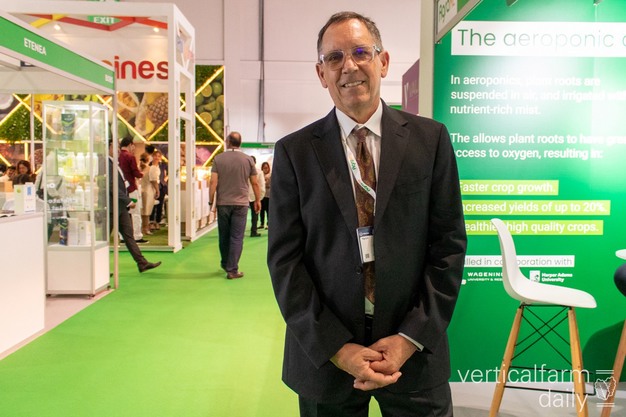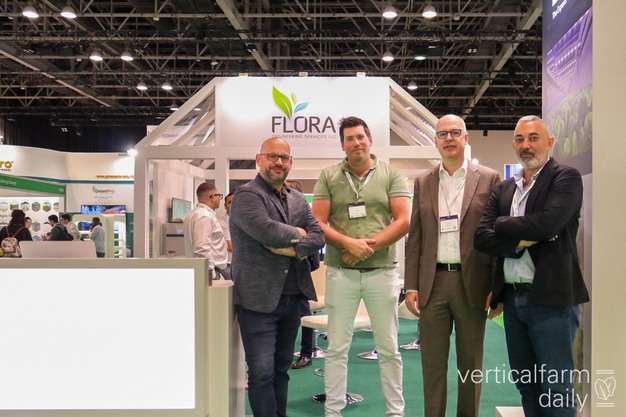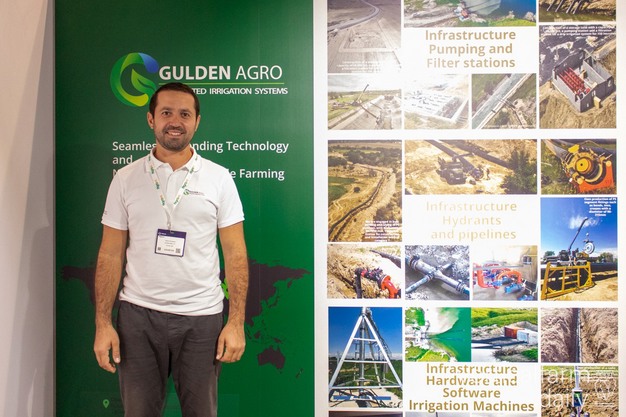"Given the growing market in most Gulf countries, especially the UAE, we are seeing an increasing demand for low-tech cultivation methods such as greenhouses. Therefore, we'd like to tackle that opportunity. At the same time, production and exports are increasing in North Africa as they cater to large enterprises," said a Moroccan exhibitor at the show. However, Moroccan producers prefer to work with their domestic greenhouse manufacturers, as they can supply locally-made greenhouses.
Click here to view the photo report.

Rick Langille with Harvest Today made an appearance too
Self-sufficiency
Tomatoes and cucumbers are the biggest cash crops in the UAE, as they are nutritious and often incorporated into local dishes. "To be successful in the Middle East, you need to outsource production and conduct market analysis, as you cannot compete with the prices. Moreover, client maintenance is much greater in the Middle East than in Europe," noted an Italian supplier.
Click here to view the photo report.

Oskar Schortz with GyroPlant, showcasing substrate-free alternatives
Big market shift to India
Several Indian suppliers were present at the event to showcase their solutions and services. When asked whether indoor producers are gaining more traction, many agreed that India's outdoor growers have a strong market position at low prices. This places greenhouse or vertical farm operators in a niche market that demands premium prices compared to the 'status quo.' "The Indian market lacks investment for hydroponic operators, and the market is too small for high-quality produce," they said.
 Fred Ruijgt (Priva), Peter Rietveld (TTA), Olav Scholte (Dutch Gulf Consult), and Yamen Alkodmani with Flora Engineering Services where the companies showcased all of their solutions
Fred Ruijgt (Priva), Peter Rietveld (TTA), Olav Scholte (Dutch Gulf Consult), and Yamen Alkodmani with Flora Engineering Services where the companies showcased all of their solutions
However, in the case of strawberries and blueberries, India is seeing a shift with berry producers entering the market, purchasing large parcels of land to open new greenhouse facilities ranging from 50 to 100 acres. "You can produce at a very low cost, and the average size of a regular grower is about 1 acre, which doesn't allow for great unit economics. Therefore, international operators are collaborating with these existing growers."
With numerous breeding programs being launched in the country, varieties are showcasing their added value by being customized to specific growing environments alongside the potential of this 'increasing market.' "Exporting a container of berries from India will still be cheaper compared to European labor or importing from Latin American countries."
Click here to view the photo report.
 Yevgeniy Gulyarenko with Gulden Agro LLC of Kazakhstan noted that the market is experiencing massive growth, with large greenhouse projects entering the sector.
Yevgeniy Gulyarenko with Gulden Agro LLC of Kazakhstan noted that the market is experiencing massive growth, with large greenhouse projects entering the sector.
Not only India is attracting investors, but Kazakhstan is also seeing interest, as a Kazakh horticulture construction company indicated. "Many Chinese investors are entering the market with their equipment, recognizing the potential of greenhouse production in our country." Both greenhouse and open field production are gaining traction.
